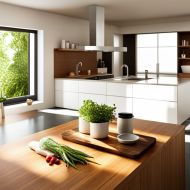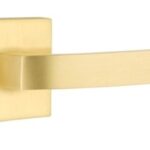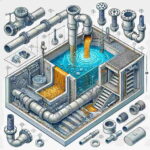Essential Components of an Indoor Hydroponic Garden Setup

In recent years, the concept of an indoor hydroponic garden has gained immense popularity among urban dwellers and gardening enthusiasts alike. These innovative setups offer a sustainable and efficient way to grow fresh produce right in the comfort of one’s home or office. But what exactly goes into setting up a successful indoor hydroponic garden?
Understanding An Indoor Hydroponic Garden: Beyond Soil
At its core, an indoor hydroponic garden is a method of growing plants without soil, using a nutrient-rich water solution instead. This innovative approach allows for greater control over the plant’s environment, leading to faster growth and higher yields. By eliminating soil, gardeners can avoid many common pests and diseases that typically plague traditional gardens. Additionally, hydroponic systems are often more water-efficient, recycling water continuously, and reducing the overall consumption. But, what do you need to set up an efficient indoor hydroponic garden?
Hydration and Nutrition: The Lifeline of Hydroponics
Water and nutrient solution plays a pivotal role. In an indoor hydroponic garden, plants draw their nutrients directly from the water. This means the quality of the water and the balance of the nutrient solution are paramount to the health and productivity of the garden. Additionally, it’s noteworthy that an indoor hydroponic garden’s reliance on this nutrient-rich water solution contributes significantly to water conservation, using a remarkable 90% less water than traditional soil-based gardening methods.
Shedding Light on Growth: The Role of Lighting
Lighting is another essential component. Plants require light to photosynthesize and grow. In an indoor hydroponic garden setup, natural sunlight might be scarce or inconsistent. This is why artificial lighting, such as LED grow lights, becomes vital to ensure plants receive the right amount of light when in an indoor environment.
Modern Farming: The Age of Automation
Last but not least, modern indoor hydroponic gardens often incorporate advanced control systems, standing out as examples of technological evolution. These state-of-the-art systems are designed to take the guesswork out of gardening. With features like smart sensors and Wi-Fi connectivity, they can continuously monitor the garden’s environment, adjusting settings in real-time to maintain ideal growth conditions, ensuring that gardeners can manage their crops from anywhere, anytime. Their optimized LED lighting ensures plants receive the right amount of light, regardless of external conditions. Furthermore, some of these systems are equipped to provide timely alerts, such as when it’s time to harvest or if there’s a change in nutrient levels. This level of automation not only simplifies the gardening process but also ensures that plants receive consistent care, leading to healthier crops and higher yields. In essence, with these smart systems, an indoor hydroponic garden is not just automated but also more connected and responsive than outdoor methods.
Diverse Choices with Seed Pods in Hydroponic Systems
One of the standout features of a modern indoor hydroponic garden is the use of seed pods. These pods, offering a selection of several diverse crops, are meticulously designed to provide an optimal environment for seeds to germinate and sprout. Whether you’re looking to grow butter lettuce, shiso, Portuguese kale, chamomile, or any of the other numerous options, there’s a seed pod tailored for it. Pre-packed with the right amount of nutrients and a growth medium, they eliminate the need for soil, ensuring a cleaner and more efficient planting process. The convenience of seed pods also means that users can easily switch between different crops without the hassle of traditional planting. Once inserted into the hydroponic system, these pods receive the perfect balance of water, light, and nutrients, ensuring robust and healthy plant growth. Moreover, the use of seed pods reduces the chances of contamination from soil-borne diseases, making them a safer choice for indoor gardening.
Setting up an indoor hydroponic garden can be a rewarding experience, offering fresh produce year-round. While there are several components to consider, these systems make the growing process seamless and straightforward. If you’re considering starting your own indoor hydroponic garden, there’s no better time than now. With smart technology leading the way, you’re sure to have a thriving garden in no time at all. Are you ready to embark on your hydroponic journey?







